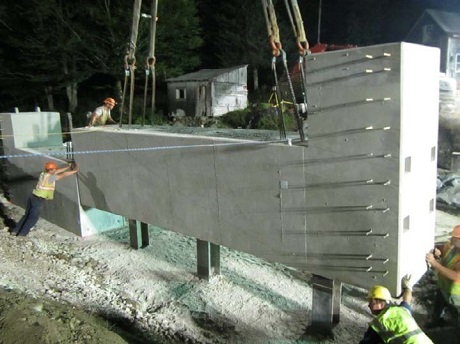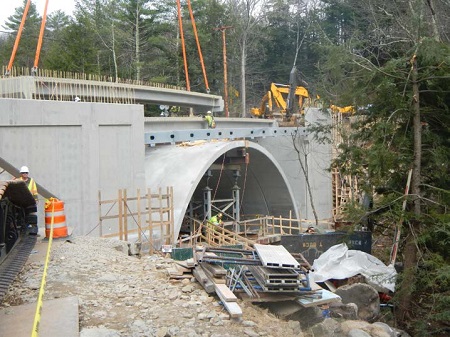SHRP2 C19 Expediting Project Delivery

Expediting Project Delivery

Constraints

Strategies

Meetings and Conferences

Webinars

Library

Contact Us
Applying Expediting Project Delivery (C19) in Vermont
View Printer-friendly PDF ➤
SHRP2
Case Studies Series
Expediting Project Delivery (C19)
Speeding up the delivery of transportation projects is high on everyone’s agenda. Expediting Project Delivery (C19) was developed through the second Strategic Highway Research Program (SHRP2) to provide innovative approaches to the planning process to produce better projects and environmental outcomes while addressing the common constraints encountered during project implementation.
These strategies save time, reduce the need for rework, reduce the risk of unanticipated permitting and mitigation costs, and provide a framework for resolving disputes.
The C19 framework includes:
- Twenty-four proven and effective strategies that focus on planning, National Environmental Policy Act (NEPA), and permitting phases of project development and delivery
- These strategies address 16 common obstacles to meeting project schedules, reducing risk, and building strong collaboration.
Twelve state departments of transportation are now implementing Expediting Project Delivery through the SHRP2 Implementation Assistance Program. This case study documents activities underway in the Massachusetts Department of Transportation (MassDOT) to maximize efficiency of planning and approvals.
Vermont Agency of Transportation Uses SHRP2 Solution Expediting Project Delivery (C19) to Expedite Project Delivery
Restructuring to reduce project development time
From coast to coast, transportation agencies strive to find ways to complete projects faster. In 2012, the Structures Section of the Vermont Agency of Transportation (VTrans) recognized the need to accelerate project delivery and created the Project Initiation and Innovation Team (PIIT), a dedicated scoping team, and the Accelerated Bridge Program (ABP) team. The teams work in tandem to quickly advance the project development process by minimizing impacts using short-term road closures and prefabricated bridge elements and systems.
Using lessons learned from Tropical Storm Irene and endorsement from the highest levels within VTrans, ABP team members set a goal to drastically cut times for project development from 60 months down to 24 months.

VTrans realized a 35 percent savings in preliminary engineering costs for the 30 bridges using Expediting Project Delivery.
Amidst skepticism from the public when road closures were proposed—and concerns of greater strain on budgets and internal team members and resource groups—VTrans became a lead adopter of Expediting Project Delivery (C19) in Round 2 of the SHRP2 Implementation Assistance Program.
VTrans’ implementation activities remove impediments to project delivery
Expediting Project Delivery is a guidebook that identifies 24 strategies for addressing or avoiding 16 common constraints to help speed project delivery. Twenty-four strategies are a lot to cover in a short amount of time, so VTrans picked five to focus on to increase the likelihood of success and adoption. The five strategies that are particularly applicable to the PIIT and ABP project delivery in Vermont are listed below, as well as specific information on the implementation of two of them.
- Strategy 3 – Context Sensitive Design/Solutions
- Strategy 8 – Expedited internal review and decision making
- Strategy 10 – Highly Responsive Public Engagement
- Strategy 21 – Strategic Oversight and Readiness Assessment
- Strategy 22 – Team Co-Location

Collaboration strategies led to significantly shortened road closures during bridge construction.
Putting the strategies into action
Strategy 10 – Highly Responsive Public Engagement Improves Public Involvement and Support.
VTrans saw the need to design a better approach in which to garner public opinion on specific projects that could yield to more positive results. At scoping presentations, VTrans used clicker technology to ask for feedback on times of year that are best for road closures and acceptable lengths of time that a road can be closed. VTrans also created one-page project fact sheets for the public describing each project, its timeline, detour routes, and information about the project manager. The fact sheets were distributed throughout the life of the project, including well before the closures occurred. Project information officers were also brought on board to provide real-time information to public stakeholders and customers during road closures. The public’s response to engagement and outreach was so positive that many approaches, including the fact sheets, have been adopted as routine practice at the agency.
Strategy 22 – Team Co-Location Improves Collaboration.
To foster an environment of heightened communication and coordination, VTrans added a dedicated utility specialist to the Structures Section in 2012. This effort was so successful that the Hydraulics Unit was also subsequently reassigned to this group in 2014. By co-locating, structural and hydraulic engineers work side by side, encouraging greater knowledge transfer, heightened collaboration, and expedited internal review and decision making. In some cases, where co-location was not practical or feasible, the Structures Section created the team co-organization concept. Using this approach, meetings are held at key milestones throughout the life of the project, including collaboration meetings to garner support for the recommended alternative during the project definition stage and two constructability review meetings following preliminary and final plans. These meetings have gone a long way to creating valuable partnerships, ultimately removing impediments to project delivery.
By incorporating standardized drawings and specifications in addition to design details, VTrans has realized a 35 percent savings in average preliminary engineering costs for the 30 bridges that have been replaced as part of the ABP from 2012 through 2016.
Multiple Benefits
“Expediting Project Delivery is a continuing evolution. We will move forward as we explore innovative ideas and bring these concepts into standard practice. Striving for excellence helps to reinvent services, products, and process. There are always ways to improve.”
- Wayne Symonds, P.E.
VTrans Structures Engineer and Program Manager
Benefits of Expediting Project Delivery
Speeding up the delivery of transportation projects is high on everyone’s agenda and provides significant benefits.
- Considerable time and cost savings
- Increased internal VTrans and external stakeholder satisfaction
- 35 percent savings in preliminary engineering costs for bridge replacements
- Reduced times for road closures
- Increased customer satisfaction with communications and outcomes
For more information on VTrans’s effort to implement Expediting Project Delivery, contact Wayne B. Symonds, PE at Wayne.Symonds@vermont.gov or call 802.828.0503.
For information on the SHRP2 implementation of Expediting Project Delivery, contact David Williams at FHWA, David.Williams@dot.gov or call 202.366.4074 or Kate Kurgan at
AASHTO, KKurgan@aashto.org or call 202.624.3635.

